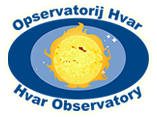
| |
Topical Discussion Meeting - Probabilistic Data Assimilative Forecast of the Near-Earth Radiation EnvironmentYuri Shprits (GFZ University of Potsdam, Germany), Melanie Burns (GfZ University of Potsdam, Germany)Wed, 11:30-12:45, Fire The PAGER project provides space weather predictions that will be initiated from observations on the Sun and predict radiation in space and its effects on satellite infrastructure. Real-time predictions and a historical record of the dynamics of the cold plasma density and ring current allow for evaluation of surface charging, and predictions of the relativistic electron fluxes allow for the evaluation of deep dielectric charging. We provide a 1-2 day probabilistic and data assimilation forecast of ring current and radiation belt environments, which will allow satellite operators to respond to predictions that present a significant threat. As a backbone of the project, we will use the most advanced codes that currently exist. Codes outside of Europeare are being transferred to operation in Europe, such as components of the state-of-the-art Space Weather Modelling Framework (SWMF). We have adapted existing codes to perform ensemble simulations and perform uncertainty quantifications. The project includes a number of innovative tools, including data assimilation and uncertainty quantification, new models of near-Earth electromagnetic wave environment, ensemble predictions of solar wind parameters at L1, and data-driven forecast of the geomagnetic Kp index and plasma density. The developed codes may be used in the future for realistic modeling of extreme space weather events. Consultations with stakeholders will be central for the project. We will reach out to scientific, industry and government stakeholders and will tailor our products for the stakeholder’s needs and requirements. Dissemination of the results will play a central role in the project. Our team includes leading academic and industry experts in space weather research, space physics, empirical data modeling, and space environment effects on spacecraft from Europe and the US. |
|
|
| |








